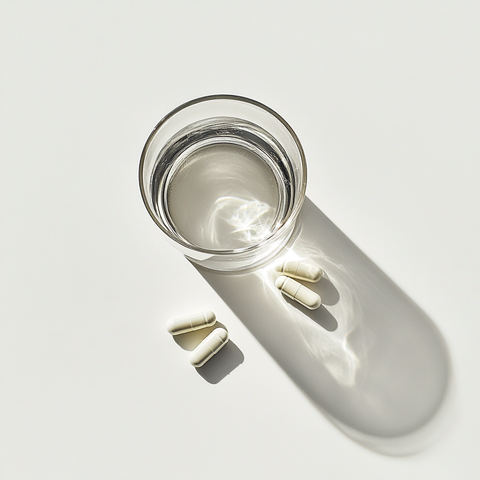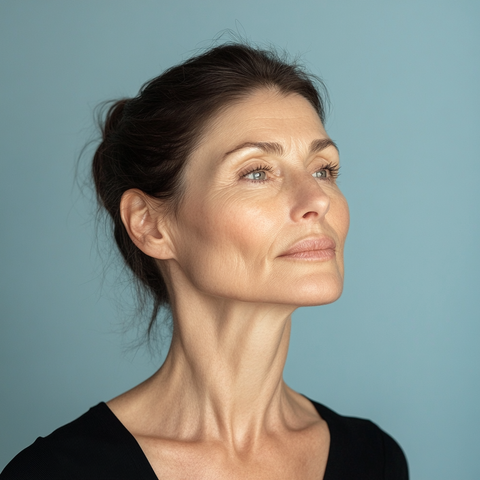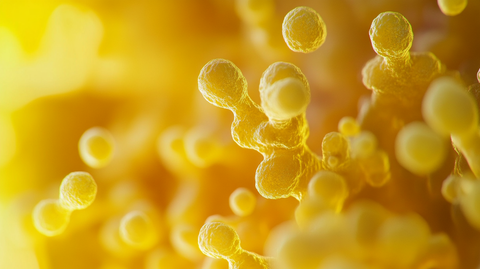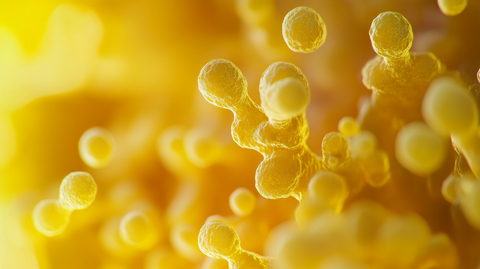What is the difference between dry skin and atopic skin?
It's common to confuse dry skin with atopic skin because both share similar characteristics, such as tightness, discomfort, and sometimes even redness. However, these two skin conditions are fundamentally different, both in their causes and treatments. So, what's the difference between dry skin and atopic skin ? This article takes an in-depth look at the differences between these two skin types, their causes, the symptoms that characterize them, and the appropriate solutions for caring for them.
Understanding Dry Skin: What Is It?
Dry skin, also called xerosis , is a temporary or chronic skin condition that results from insufficient moisture in the upper layer of the skin, the epidermis. This condition is very common and affects millions of people around the world, especially during cold or dry periods of the year.
Dry skin lacks essential lipids (fats), preventing it from retaining moisture properly. The hydrolipidic film that protects the skin is impaired, leading to water loss and making the skin vulnerable to external aggressions. Among the most common symptoms is skin that is tight, flaky, and may sometimes have small cracks or fissures. Dry skin can affect anyone at any stage of life, although some people are more predisposed to it due to genetic, climatic, or age-related factors.
Causes of dry skin
There are several underlying causes of dry skin, some temporary and others more persistent.
- Climatic : Cold, wind or very dry environments cause increased evaporation of water from the skin, making it dry and uncomfortable.
- Irritant products : The use of inappropriate cosmetic products, especially those containing aggressive cleansing agents, can alter the skin's hydrolipidic film.
- Age : With age, the skin produces less sebum, which reduces its ability to retain moisture.
- Excessive hygiene : Washing too frequently or using very hot water weakens the skin barrier, making the skin drier.
- Nutrition and Hydration : A lack of hydration or a diet low in essential fatty acids and vitamins (especially vitamin E) can also contribute to dry skin.
Symptoms of dry skin
Dry skin often presents with the following symptoms:
- Tightness and discomfort, especially after showering or exposure to cold.
- Appearance of small dead skin or scales, particularly on the face and hands.
- Roughness to the touch, lack of shine.
- Mild redness and irritated areas in case of more intense dryness.
It is important to note that dry skin is not usually associated with intense itching, severe inflammation, or skin lesions, unlike atopic skin.
Solutions for treating dry skin
To combat dry skin, it's important to adopt a moisturizing and restorative skincare routine. Products rich in hydrating and nourishing active ingredients are essential for restoring the skin barrier and preventing water loss.
Marine Collagen - Anti-Aging Formula , for example, is an ideal supplement for people with dry skin. Thanks to its hyaluronic acid and vitamin C content, it helps maintain skin hydration and stimulate collagen production, which strengthens the skin barrier and prevents dehydration.
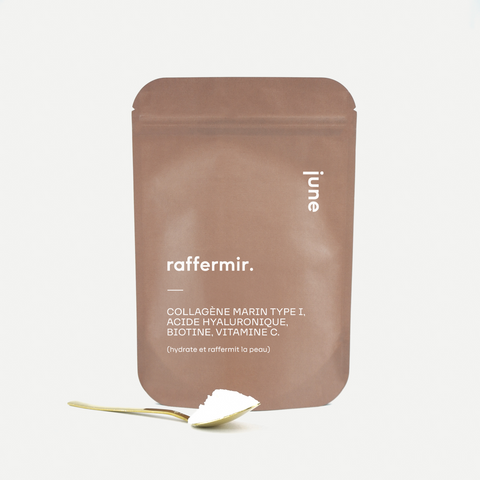
Additionally, a moisturizer containing ingredients like shea butter, vegetable oils, or glycerin can help replenish the hydrolipidic film and maintain skin suppleness.
Atopic skin: a complex pathology
Atopic skin, also known as atopic dermatitis, is a chronic inflammatory skin condition resulting from an abnormality in the skin barrier and immune hyperreactivity. It is much more complex and serious than simple dry skin and requires specific care.
Atopic dermatitis is a hereditary disease that primarily affects children, although some adults can also suffer from it. People with atopic dermatitis have skin that overreacts to various external stimuli, such as allergens, cold, stress, or certain chemicals.
Causes of atopic skin
The causes of atopic dermatitis are still poorly understood, but several factors are involved:
- Genetic factors : People with atopic skin often inherit a mutation in the gene responsible for the production of filaggrin, a protein essential for maintaining the skin barrier.
- Immune reactions : Atopic skin is the result of an exaggerated immune response to allergens. This causes chronic inflammation that makes the skin prone to itching, redness, and skin lesions.
- Environmental factors : Pollution, cold, stress or even exposure to certain allergens can trigger or worsen atopic flare-ups.
Symptoms of atopic skin
Unlike dry skin, atopic skin has much more severe and disabling symptoms, including:
- Severe itching : The most characteristic symptom of atopic skin is itching (pruritus), which can become unbearable.
- Redness and patches : Areas affected by atopic dermatitis are often red, inflamed, and covered with dry patches.
- Lesions and scabs : If scratched, oozing lesions and scabs may form, making the skin more vulnerable to infection.
- Very dry skin : Although atopic skin is very dry, it differs from simple dry skin in its chronic inflammatory nature.
Solutions to soothe atopic skin
Atopic skin requires specific medical and cosmetic care. Treatments often include emollient creams, topical corticosteroids to control inflammation, and, in more severe cases, immunosuppressants.
To soothe irritation, it's important to use skincare rich in emollients, such as shea butter or ceramides, which help restore the skin barrier. Additionally, dietary supplements can play a key role in improving skin condition.
Liposomal Vitamin C, for example, is an excellent supplement for strengthening the skin barrier and reducing inflammation. Vitamin C is a powerful antioxidant that protects the skin from oxidative damage, while liposomal technology improves its absorption by the body, making it an ideal choice for those suffering from atopic skin.
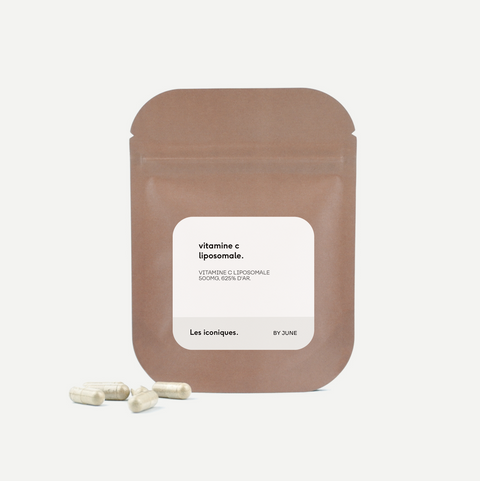
Key differences between dry skin and atopic skin
Although dry skin and atopic skin may sometimes look similar visually, they have important differences:
- Cause : Dry skin is often caused by external factors such as climate or the use of irritating products. Atopic skin, on the other hand, is linked to an abnormal immune response and genetic factors.
- Symptoms : Dry skin is mainly characterized by a feeling of tightness and mild scaling, while atopic skin presents intense itching, red patches and severe inflammation.
- Treatment : Dry skin can be relieved with simple moisturizers, while atopic skin requires more specific care, often under the supervision of a dermatologist, with the use of topical or oral medications.
How to take care of your dry or atopic skin?
Whether you have dry or atopic skin, adopting a good skincare routine is essential to improving the condition of your skin. Here are some recommendations:
- For dry skin : Use moisturizers rich in essential fatty acids, such as Marine Collagen – Anti-Aging Formula , and avoid harsh products that could worsen dryness.
- For atopic skin : In addition to emollient creams, products like Liposomal Vitamin C can strengthen the skin barrier and reduce inflammation.
It is also essential to adopt a healthy lifestyle by eating a balanced diet, drinking enough water and protecting your skin from external aggressions.


